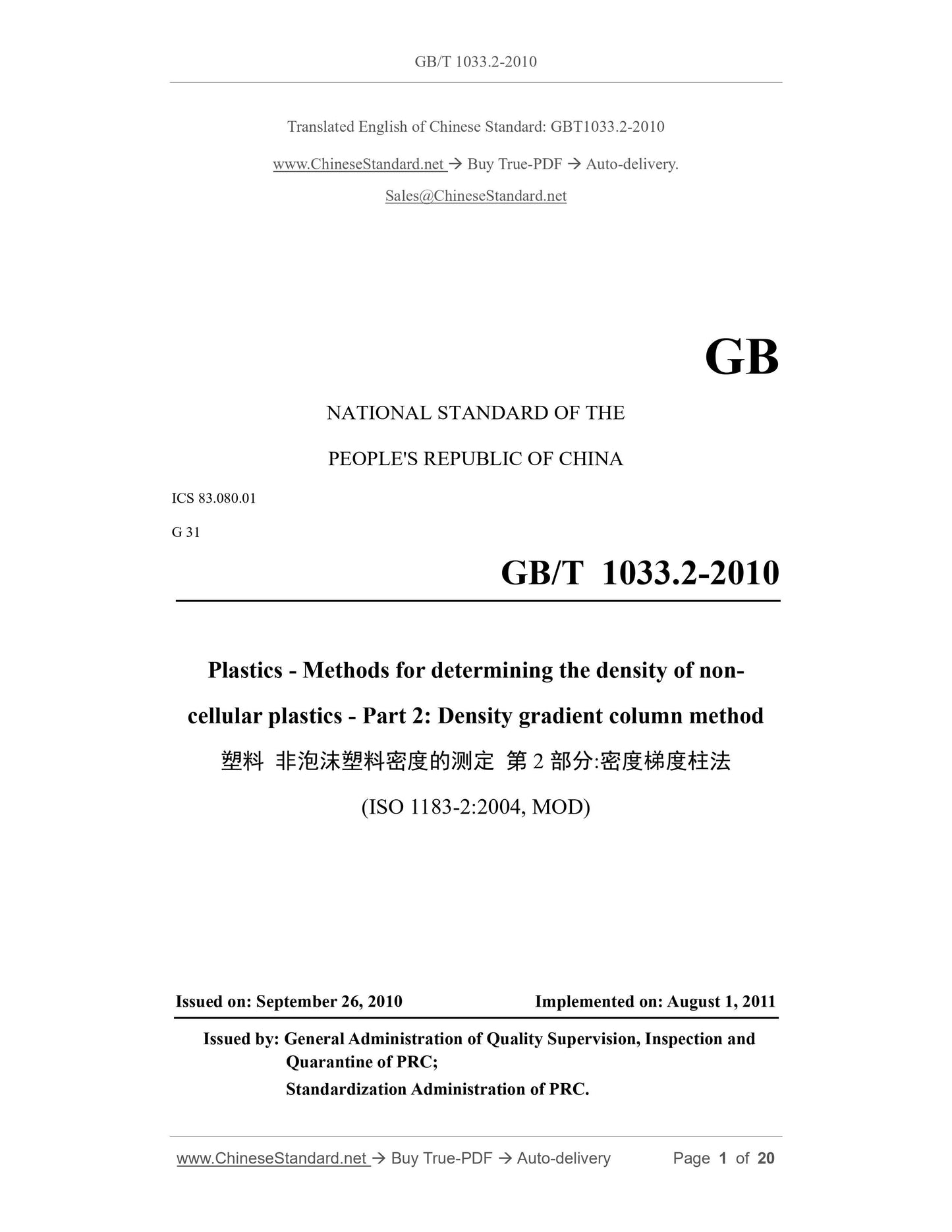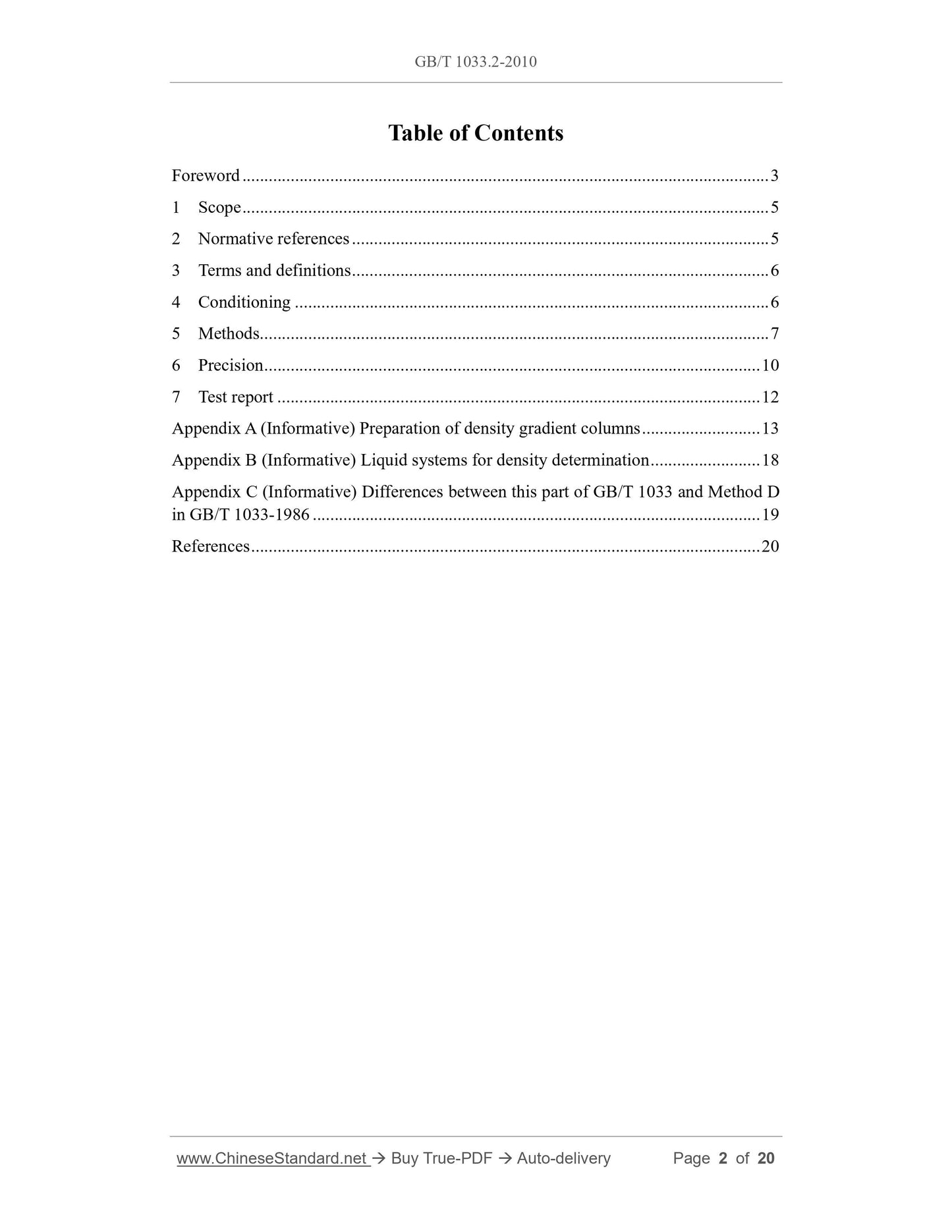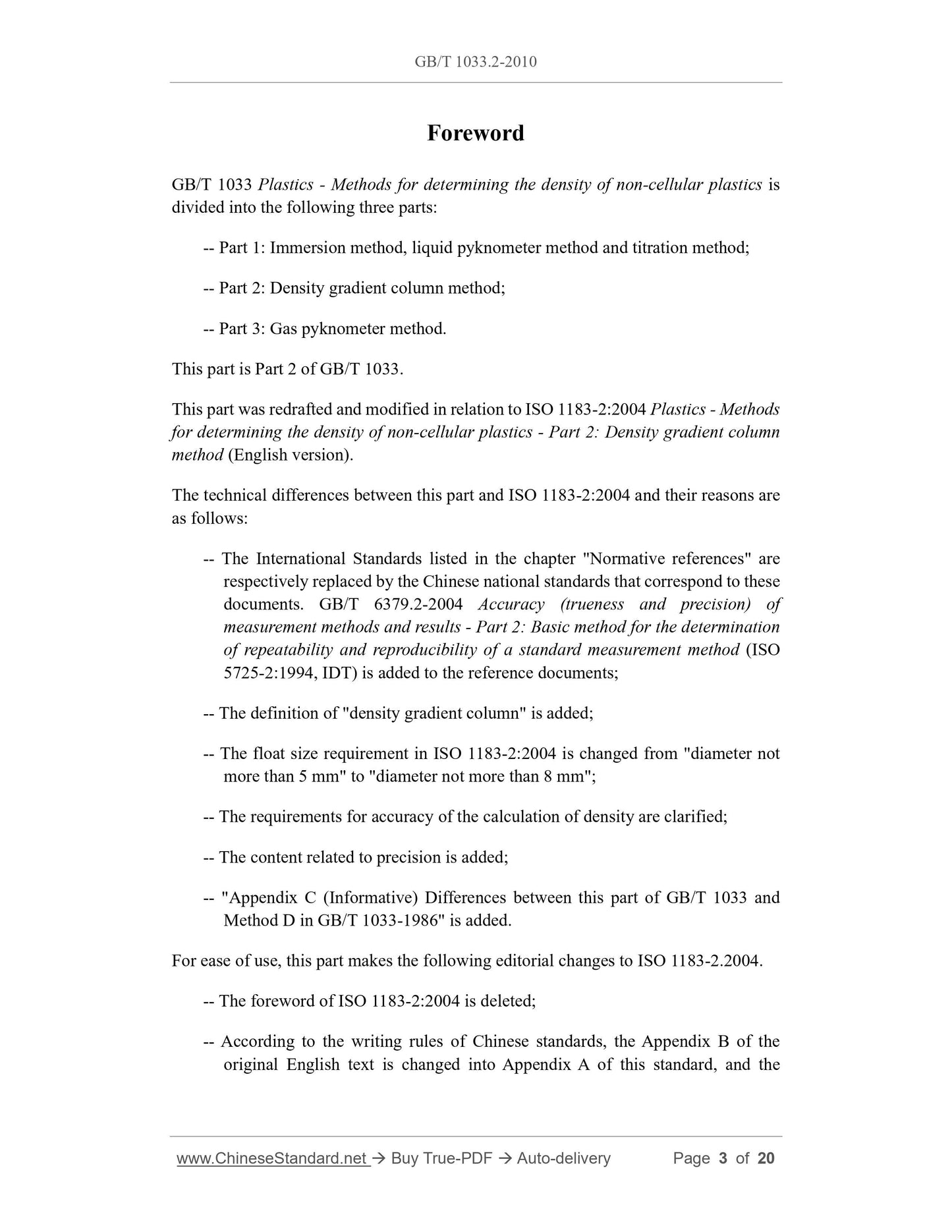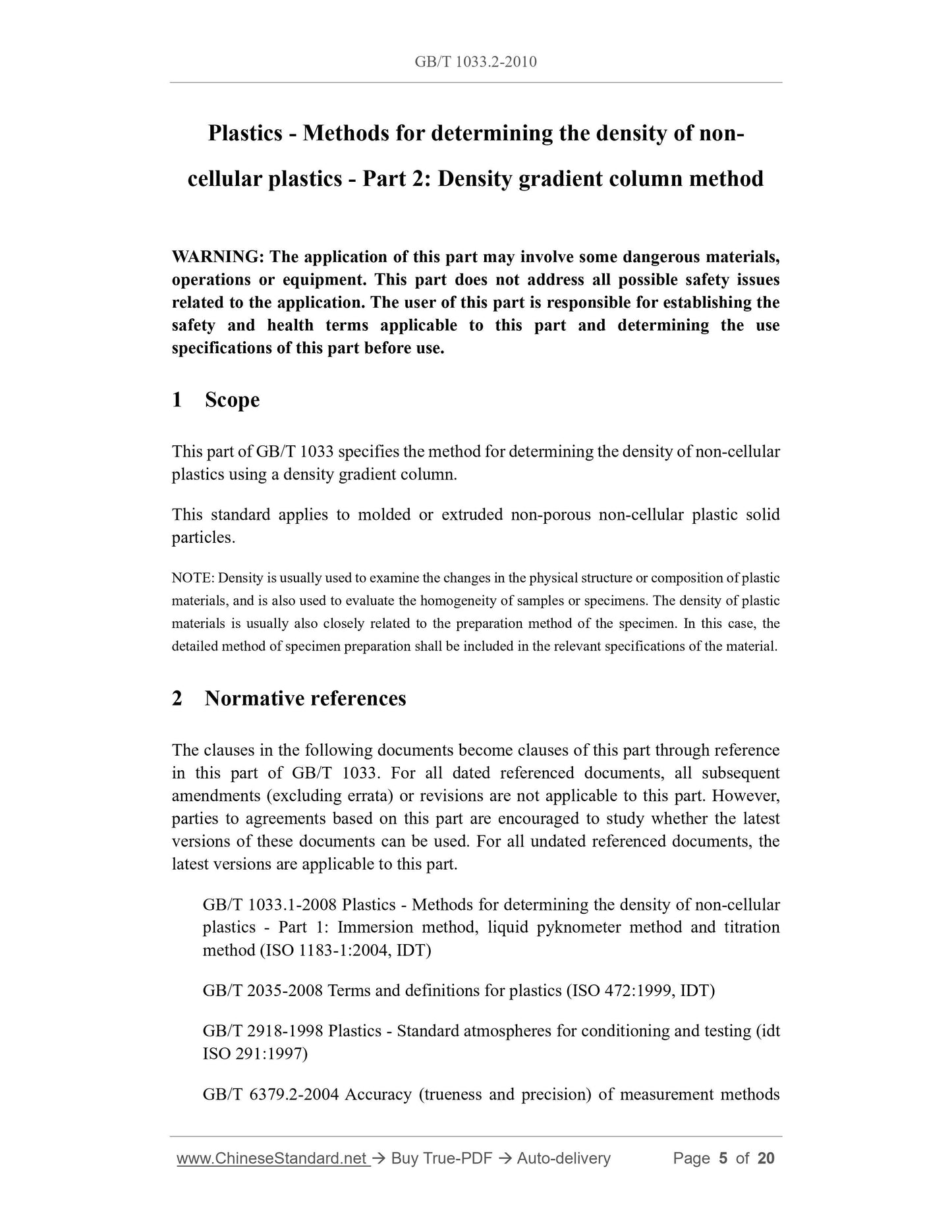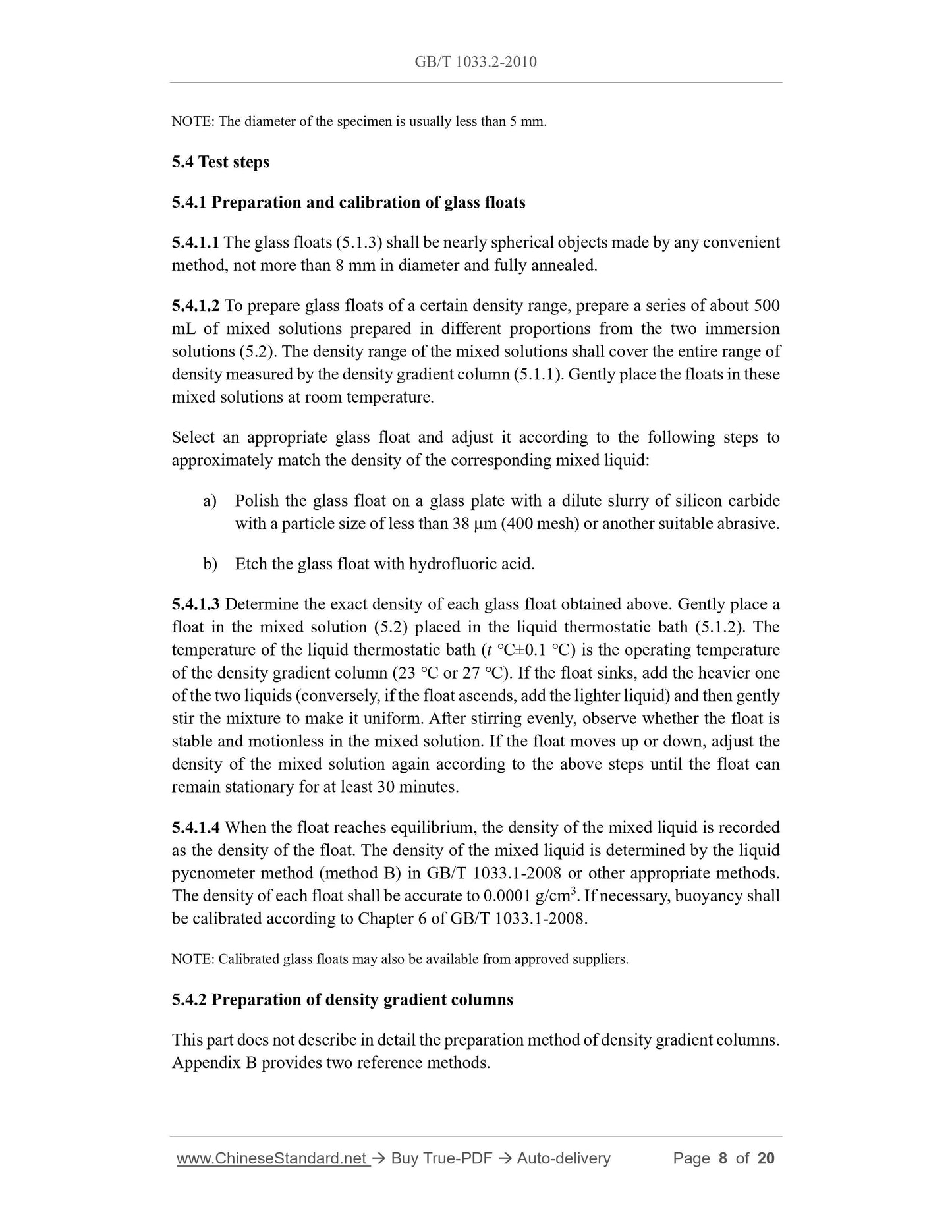1
/
of
5
www.ChineseStandard.us -- Field Test Asia Pte. Ltd.
GB/T 1033.2-2010 English PDF (GB/T1033.2-2010)
GB/T 1033.2-2010 English PDF (GB/T1033.2-2010)
Regular price
$175.00
Regular price
Sale price
$175.00
Unit price
/
per
Shipping calculated at checkout.
Couldn't load pickup availability
GB/T 1033.2-2010: Plastics -- Methods for determining the density of non-cellular plastics -- Part 2: Density gradient column method
Delivery: 9 seconds. Download (and Email) true-PDF + Invoice.Get Quotation: Click GB/T 1033.2-2010 (Self-service in 1-minute)
Newer / historical versions: GB/T 1033.2-2010
Preview True-PDF
Scope
This part of GB/T 1033 specifies the method for determining the density of non-cellularplastics using a density gradient column.
This standard applies to molded or extruded non-porous non-cellular plastic solid
particles.
NOTE: Density is usually used to examine the changes in the physical structure or composition of plastic
materials, and is also used to evaluate the homogeneity of samples or specimens. The density of plastic
materials is usually also closely related to the preparation method of the specimen. In this case, the
detailed method of specimen preparation shall be included in the relevant specifications of the material.
Basic Data
| Standard ID | GB/T 1033.2-2010 (GB/T1033.2-2010) |
| Description (Translated English) | Plastics -- Methods for determining the density of non-cellular plastics -- Part 2: Density gradient column method |
| Sector / Industry | National Standard (Recommended) |
| Classification of Chinese Standard | G31 |
| Classification of International Standard | 83.080.01 |
| Word Count Estimation | 12,199 |
| Date of Issue | 2010-09-26 |
| Date of Implementation | 2011-08-01 |
| Quoted Standard | GB/T 1033.1-2008; GB/T 2035-2008; GB/T 2918-1998; GB/T 6379.2-2004 |
| Adopted Standard | ISO 1183-2-2004, MOD |
| Regulation (derived from) | National Standard Approval Announcement 2010 No.6 (Total No.161) |
| Issuing agency(ies) | General Administration of Quality Supervision, Inspection and Quarantine of the People's Republic of China, Standardization Administration of the People's Republic of China |
| Summary | This standard specifies the method for determining the density of non- foam with a density gradient column. This section applies to molded or extruded non -porous, non foam solid particles. |
Share
